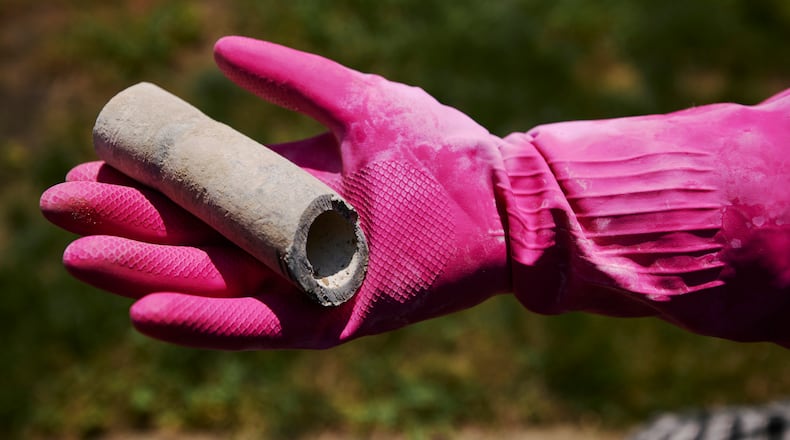Lead Safe Ohio program funds of $84,321,999 will be allocated across 72 counties as follows:
- $50.3 million for owner-occupied homes
- $17.3 million for rental properties
- $6.5 million for childcare facilities
- $1.5 million for congregate care shelters
The state is allocating the following amount of funds to local counties: $4.75 million for Montgomery County, $1.37 million for Greene County, $1.27 million for Clark County, $710,000 for Miami County and $690,000 for Preble County. No funds were awarded to Warren, Butler, Darke or Champaign counties.
“We want to create a safe environment for all children in Ohio, and lead poisoning can have lasting effects on the ability for our young people to learn, grow, and thrive,” said Lt. Governor Jon Husted. “By removing this health hazard from our communities, we’re helping ensure the future leaders of our state have the tools to live up to their fullest potential.”
Lead-based paint is the most common cause of lead poisoning as the paints chips and produces dust when deteriorating, the state said. Children are most at risk for lead poisoning as children are more susceptible to the harmful effects of lead and are less able to detoxify their bodies of the harmful substance.
Long-term exposure to lead can impact physical and mental health and the ability to learn and earn an income. More information about the dangers of lead poisoning can visit the Ohio Department of Health website at odh.ohio.gov.
The state created the Lead Safe Ohio Program in partnership with the 134th Ohio General Assembly, which funded the program in House Bill 45 with $150 million in American Rescue Plan Act funds. In total, the Lead Safe Ohio program will spend nearly $100 million of federal funding for lead prevention and mitigation activities in eligible properties built before lead-based paint was outlawed in 1978.
Communities and property owners can use the funds for projects such as waterline replacement, window and door replacement, siding enclosure, soffit enclosure, porch component repair, and lead cleaning efforts. Funding is available based on high-risk ZIP codes, the number of homes built before 1980 and the percentage of low-to-moderate-income households in the state.
The program, announced by DeWine in May, is administered by the Ohio Department of Development, in coordination with the Ohio Department of Health.
“We’ve all known the risks of lead exposure for decades and in Ohio, we’re turning awareness into action,” said Lydia Mihalik, director of the state’s Department of Development. “By working with our local partners to identify at-risk properties and facilitate these crucial repairs, we’re building safer neighborhoods and improving the quality of life for thousands of Ohioans.”
Who qualifies
Households apply to their local county/grantee for assistance. The list of those contacts will soon be posted to development.ohio.gov/leadsafeohio.
The local county/grantee will determine the households based on the below criteria:
- Households with incomes at or below 80% of the area median income (AMI) are eligible and shall be prioritized.
- Households with incomes over 80% of AMI qualify if they meet the Housing Insecurity and Home Value Limit criteria detailed below:
- A household with an income over 80% AMI can qualify for assistance if they provide documentation of housing insecurity.
- Housing insecurity for the purpose of the Lead Safe Ohio program is defined as the household uncertainty of safety and occupants could be jeopardized due to lead based paint concerns.
- Lead Based Paint concerns include chipping and peeling paint, and/or bare soil near failing paint.
- A lead hazard has been identified.
- Rental units where affordable housing could be taken off market due LBP concerns.
- If the household has documented a housing insecurity, the home value limit must be below the state-wide limit of $314,000 to be eligible.
About the Author

